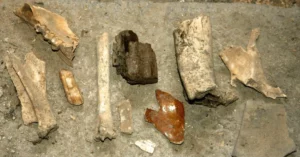AI Answer Evaluation Platform Live Now. Try Free Answer Evaluation Now
Surjit Chandra Sinha
Surjit Chandra Sinha was a pioneering Indian anthropologist whose work reshaped the understanding of tribal societies, political authority, and state formation in South Asia. Bridging ethnography and theory, Sinha explored the intricate relationships between culture, power, and historical change, particularly in the context of indigenous and peripheral communities.

A leading figure in postcolonial Indian anthropology, he brought academic rigor and political sensitivity to the study of caste, tribe, and governance. As both a researcher and institution builder, Sinha left a lasting mark on Indian social science, challenging dominant narratives and foregrounding the voices of marginalized peoples.
Early Life and Education
Surajit Chandra Sinha was born on August 1, 1926, in Durgapur, Bengal Presidency, into a family with deep aristocratic and intellectual roots. His upbringing was enriched by both artistic influence-his father was a skilled landscape painter-and an environment steeped in education and public service.
He completed his early schooling in Calcutta and went on to study science at Presidency College, where he earned a Bachelor’s degree in physics and geology. However, his academic direction shifted dramatically after a pivotal encounter with anthropologist Nirmal Kumar Bose during his postgraduate studies. Inspired by Bose’s insights and India’s cultural diversity, Sinha chose to pursue anthropology, eventually completing his MA at the University of Calcutta.
Awarded a Fulbright scholarship, he continued his academic journey in the United States, earning his PhD from Northwestern University. His doctoral research focused on acculturation among the Bhumij, a tribal community in central India-laying the groundwork for his lifelong engagement with tribal studies, state formation, and political anthropology.
Academic Career and Early Fieldwork
After returning to India in the late 1950s, Sinha joined the Anthropological Survey of India, where he took on key roles, including Deputy Director and later Director at the Calcutta office. His ethnographic work during this period was wide-ranging and deeply influential, especially his studies on tribal social movements, religious transformation, and the political integration of tribal groups.
He produced detailed analyses of how marginalized communities, like the Bhumij, sought inclusion within the Indian caste system and the state. These studies were not only ethnographically rich but also theoretically innovative, combining field observation with historical depth.
Sinha later held prestigious academic positions, including professorships at institutions like the Indian Institute of Management Calcutta. He also served as Vice-Chancellor of Visva-Bharati University, where he championed interdisciplinary research and the value of ethnographic inquiry in understanding Indian society. Even after his formal retirement, he continued contributing as Director of the Centre for Studies in Social Sciences in Calcutta.
Major Theoretical Contributions
Surajit Chandra Sinha made foundational contributions to the study of tribal societies, state formation, and cultural change in India. His work challenged the static, isolated view of tribal communities that had dominated colonial and early postcolonial anthropology. Instead, he argued that tribal groups were not peripheral but central to understanding the Indian civilization’s dynamic processes.
Sinha’s key theoretical insight was his reinterpretation of tribe-state relations. Rather than viewing tribes as pre-political or outside history, he emphasized their active engagement with the expanding state systems-whether through resistance, adaptation, or alliance. His idea of state formation among tribal societies brought attention to how indigenous elites negotiated legitimacy and authority by appropriating or resisting symbols of kingship, caste, and religion.
He also explored cultural integration and mobility, especially how tribal groups like the Bhumij underwent processes of sanskritization, shifting toward caste identities to access political power and social recognition. These studies revealed the fluid boundaries between caste and tribe, and between the so-called ‘great’ and ‘little’ traditions of Indian civilization.
Methodologically, Sinha was a pioneer in blending historical and ethnographic methods. His long-term fieldwork combined archival research, oral history, and participant observation, making his scholarship both empirically grounded and conceptually sophisticated.
Key Works and Publications
Sinha’s body of work includes several landmark publications that reshaped Indian anthropology. Among his most cited works is State Formation and Rajput Myth in Tribal Central India, where he examined how tribal leaders used myths of descent and royal imagery to claim status within the emerging political order.
Another influential study was Tribe and Caste in India, in which he analyzed the structural and symbolic overlap between these two social categories. His paper on the Bhumij-Kshatriya movement offered a case study in how tribal communities mobilized historical memory and ritual performance to redefine their identity.
His academic output was not limited to Indian journals; Sinha contributed to international volumes and conferences, helping bridge Indian anthropology with global debates on power, identity, and cultural transformation. He was also an editor and mentor, supporting the next generation of social scientists through his institutional roles.
Conclusion
Surajit Chandra Sinha left an enduring mark on Indian anthropology by redefining how scholars understand tribal life, social mobility, and political change. His ability to see tribal communities not as remnants of the past, but as active participants in the formation of modern India, set him apart from many of his contemporaries. Through his fieldwork, he illuminated the ways in which indigenous people negotiate identity, authority, and inclusion-contributions that remain central to contemporary discussions of marginality and power.
As a teacher, administrator, and public intellectual, Sinha also shaped institutions and mentored generations of scholars who carried forward his interdisciplinary and critical approach. His leadership roles, from directing the Anthropological Survey of India to serving as Vice-Chancellor of Visva-Bharati University, reflected his belief that scholarship should engage with both academic inquiry and societal transformation.
He passed away in 2002, but his legacy continues through the institutions he helped build and the debates he helped define. Today, his work serves not only as a historical benchmark but also as a guide for understanding the ongoing complexities of identity, governance, and cultural change in South Asia.
References
- IIM Calcutta Archives – Dr. Surajit Chandra Sinha, Chief Guest, 13th Convocation
https://iimc-archives.iimcal.ac.in/items/show/1217 - Anthropology India Forum – Professor Surajit Chandra Sinha Biography
https://www.anthropologyindiaforum.org/indian-luminaries/professor-surajit-chandra-sinha - YourArticleLibrary – Surajit Sinha: Biography and Contribution to Indian Sociology
https://www.yourarticlelibrary.com/sociology/surajit-sinha-biography-and-contribution-to-indian-sociology/35045 - YourArticleLibrary – State Formation and Rajput Myth in Tribal Central India by Surajit Sinha
https://www.amazon.com/State-Formation-Rajput-Tribal-Central/dp/




